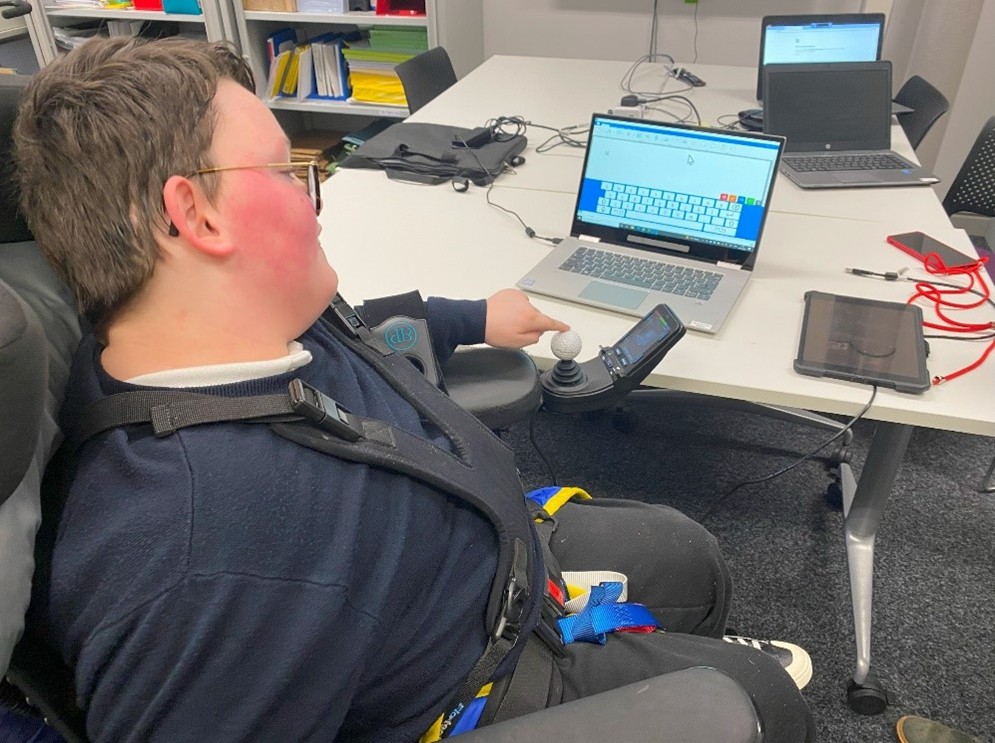OTs in Education: An Assistive Technology Focus
OTs in Education: An Assistive Technology Focus
Occupational Therapists (OTs) play a vital role in educational settings, supporting learners across a wide range of needs—from seating and positioning, to feeding support and sensory integration. You may be familiar with OTs implementing handwriting programmes, but what happens when a learner cannot use a pen?
There are many ways to “write” that don’t involve holding and manipulating a pen. One alternative is assistive technology (AT), which enables learners to record their work using computers, tablets, or other digital tools.
You can also do this via paper-based methods, often referred to as alternative pencils. Learn more about them from the Center for Literacy and Disability Studies.
Why Should OTs Be Involved in AT for Recording?
OTs bring a unique and holistic perspective to the assessment and implementation of technology for recording. They focus not only on the child’s physical and cognitive abilities, but also on the environment and task demands. A key tool used is activity analysis, defined by the Royal College of Occupational Therapists (RCOT, 2024) as:
“A process used by Occupational Therapists to understand the demands of an activity and how it can be matched or adapted to an individual’s abilities, needs, and goals.”
OT Contributions to AT for Recording
Assessment of Physical and Cognitive Abilities
OTs evaluate:
- Motor skills: fine motor control, strength, coordination
- Access methods: keyboard, touch screen, switch access
- Cognitive processing: attention, memory, executive functioning
Access Solutions and Adaptations
OTs assess the learner’s ability to use different tools and interfaces, such as:
- Keyboards
- Joysticks
- Switches
- Eye gaze systems
We also help adapt interfaces to reduce cognitive load and improve usability.
Task and Environment Modification
OTs support:
- Adapting classroom tasks (e.g. using mind mapping tools to organise thoughts)
- Promoting good posture and positioning for optimal control and comfort
- Supporting sensory regulation through environmental adjustments and targeted strategies (e.g. sensory breaks and self-soothing techniques)
Promoting Independence and Engagement
An OT’s goal is to empower learners with tools that foster confidence and independence in their education.
Case Example: Noah’s Story
As a Senior AAC Consultant at Ace Centre, I worked with Noah, a learner with Cerebral Palsy affecting all four limbs. Noah’s goal was to write stories in class independently.
Challenges
Noah experienced high muscle tone, which impacted his ability to use standard computer access methods. He controlled his powered wheelchair using a joystick, and alternative methods like eye gaze and voice control were effortful and impacted his posture.
Assessment and Solution
Through collaborative assessment with his teacher and family, we trialled various access methods. Noah’s most accurate and efficient method was using his wheelchair joystick, which allowed him to rest his arm comfortably.
We provided Noah with an integrated Bluetooth joystick that replaced his original one. This joystick allowed him to:
- Drive his wheelchair
- Access his phone
- Use his Windows-based school computer
Noah could switch between devices using a button on the joystick, giving him seamless control and greater independence. Noah was able to use the joystick to use specialist software with an onscreen keyboard, which also allowed him to add voice notes for later. As we left, Noah was creating a story for English class.
Final Thoughts
OTs are essential members of the multi-disciplinary team when considering assistive technology for recording in education. Our holistic approach, grounded in activity analysis and clinical reasoning, ensures that learners are supported in ways that are meaningful, functional, and empowering.
Written by Sam McNeilly, a Senior AAC Consultant and who has worked for Ace Centre for the past ten years. She is an Occupational Therapist by background. As part of the Ace Centre team, Samantha has co-ordinated the “AAC Policy: A Guide to Developing an Effective AAC Policy in Education Settings” and presented at a number of conferences including Communication Works, Communication Matters and ATIA (Assistive Technology Industry Association). Samantha has a particular interest in complex access solutions, using technology to support learning in the classroom (she often has a switch to hand!), and using AAC to support our younger clients to participate in play activities.




Follow Ace Centre on social media
Follow us on Twitter
Watch our latest videos via our YouTube channel here
Like us on Facebook here